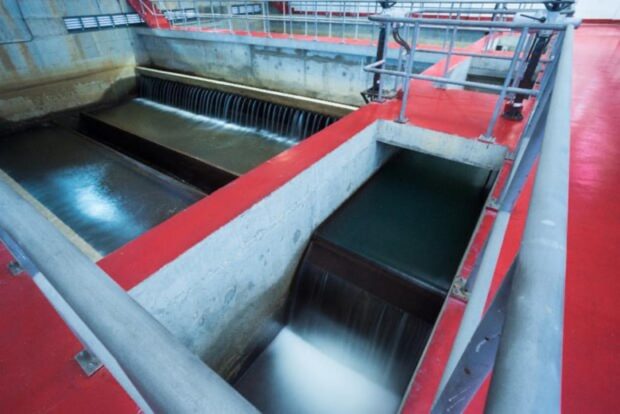
The 40 MLD of raw water harvested from backwash recovery could support 200,000 customers daily. The backwash recovery system offers an alternative method of collecting raw water, easing our strain on the Angat Dam. Cheaper than operating deep wells, it also minimizes plant losses.
MANILA, Philippines – Heeding the call of the Metropolitan Waterworks and Sewerage System (MWSS) to ensure water security especially during the summer months, Manila Water has maximized its backwash recovery program to yield 40 million liters per day (MLD).
This is a notable development from its previous 30-MLD yield. The 40 MLD of raw water harvested from this method could support 200,000 customers daily.
Backwash recovery systems are found in the company’s Balara Treatment Plant and East La Mesa Treatment Plant.
There is also an ongoing construction of a third backwash recovery system at its Cardona Treatment Plant in Rizal.
The process of cleaning the filter beds at the water treatment plants is called backwashing.
During backwashing, air, followed by water, is injected into the filter beds to remove the strained sediments.
The backwash water, which carries the sediments, goes to the sludge lagoon.
The sediments are then allowed to settle at the bottom.
The clear water left on top is then recovered back to the inlet of the treatment plant as an additional source of raw water instead of discharging it to nearby creeks.
“Aside from the massive investment in constructing new water sources, Manila Water is constantly finding ways to increase the efficiency of its existing facilities. The improved yielding capacity of our backwash recovery systems in the Balara Treatment Plants and East La Mesa, as well as the construction of a third one in Cardona, form part of our larger water security program,” Manila Water’s Corporate Communications Affairs Group Director Jeric Sevilla said.
In addition to Manila Water’s water supply augmentation projects, backwash recovery offers an alternative method of collecting raw water, easing our strain on the Angat Dam.
Cheaper than operating deep wells, it also minimizes plant losses.


